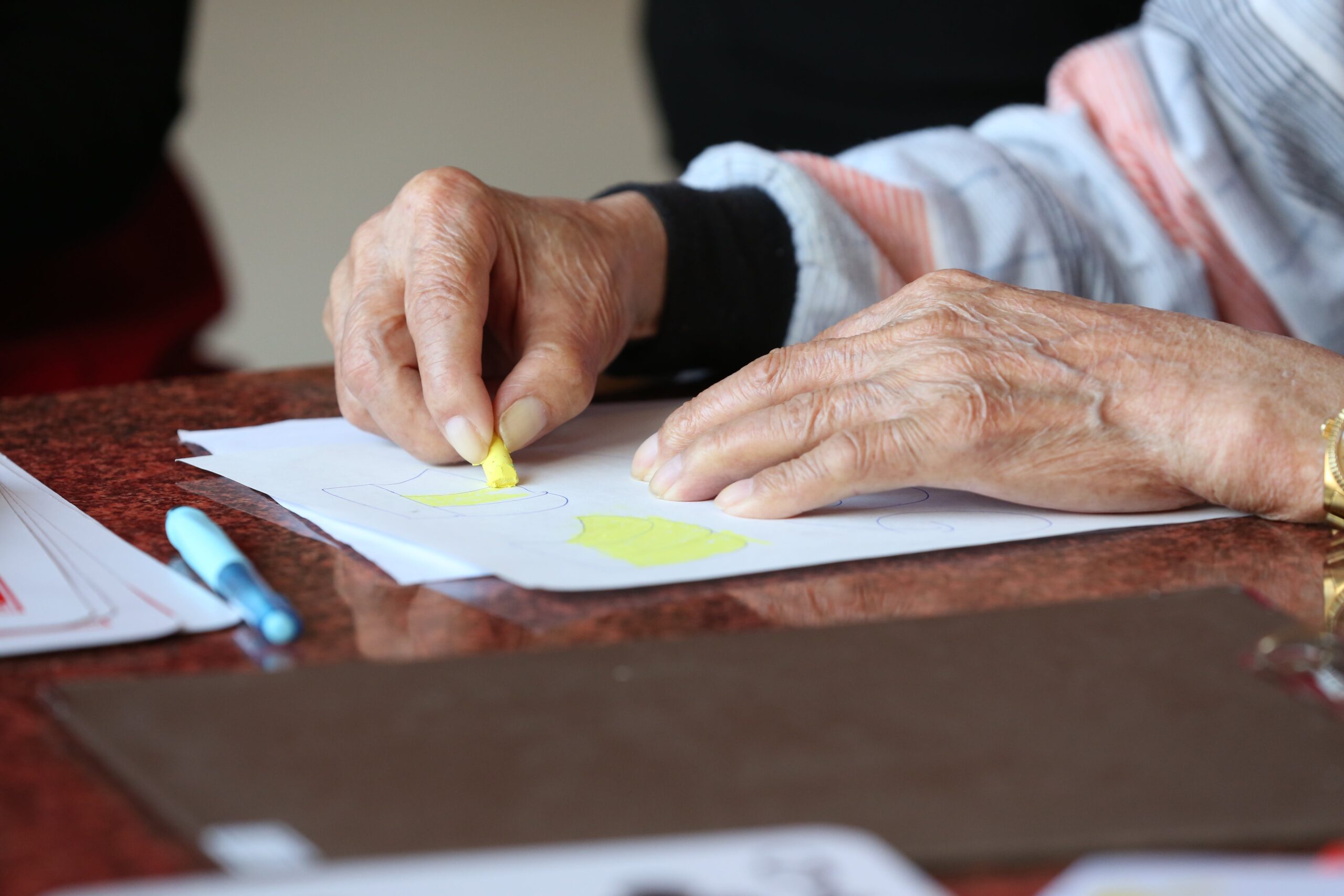Hand Arthritis: Common Symptoms and Treatments for Relief
Our hands are two of the most valuable tools we have. We use them daily to do almost everything. From picking up a glass of water to typing this article to interacting with loved ones, hands have proven invaluable tools for daily life. As time passes, hand joints can wear out and develop arthritis.
This article will examine the common symptoms and treatments for relief so that you can stay on top of arthritis and keep using your most valuable natural tools.
What Is Hand Arthritis?
Hand arthritis is a condition that impacts the joints between the bones of your hands. Over time, the tissue between your bones will break down as you age. When the tissue begins to break down with wear and tear, arthritis can set in. This degenerative disease affects about half of all women and a quarter of men by the age of 85 and can range in severity.
There are a few different types of arthritis that can affect the hand:
- Osteoarthritis (OA): This degenerative joint disease primarily affects the cartilage, the protective tissue covering the ends of bones in a joint. It occurs when tissue in your joints wears down over time.
- Rheumatoid Arthritis (RA): This is an autoimmune disease that primarily affects the joints. Unlike osteoarthritis, rheumatoid arthritis involves the immune system mistakenly attacking the body’s tissues, particularly the synovium – a membrane that lines the joints.
- Psoriatic Arthritis (PsA): Psoriatic arthritis is a form of inflammatory arthritis commonly occurring in individuals with psoriasis, a persistent skin condition marked by red, itchy, and scaly patches. This autoimmune disease involves the immune system mistakenly targeting the body’s tissues, resulting in inflammation in the joints and other affected areas.
Arthritis will most likely take hold in the knuckles and the base of your thumb. Age is one of the most common causes of arthritis in the hands. Wear and tear over time leads to a degeneration of joint tissue, which can cause the development of osteoarthritis. If you’ve sustained an injury on your hand in the past, you could experience stiffness and pain later on in life as arthritis sets in.
Common Symptoms of Hand Arthritis
Hand arthritis, whether stemming from osteoarthritis or inflammatory types like rheumatoid or psoriatic arthritis, manifests with various symptoms. Early warning signs include persistent joint pain, which can be dull, aching, or sharp, often exacerbated during or after movement. Stiffness, particularly in the morning or following periods of inactivity, is another standard indicator.
The pain, stiffness, and weakness associated with arthritis make gripping objects challenging, affecting actions like holding a cup or turning a doorknob. Fine motor skills become impaired, making tasks such as buttoning clothes or tying shoelaces difficult. Reduced flexibility and joint stiffness limit the range of motion in the thumbs and hands, impacting activities that require intricate movements like typing or writing.
Prolonged joint pain lasting more than a few weeks, particularly if it interferes with routine activities, warrants consultation with a healthcare professional.
Treatment Options for Hand Arthritis
While there is no cure for arthritis, there are plenty of treatment options to help lessen the pain associated with the disease. Here is a look at some at-home remedies and professional medical treatments available to help decrease pain levels in your hands and reestablish normal levels of movement.
Hand Warmers for Arthritis
The warmth generated by these devices can effectively alleviate joint pain by increasing blood flow to the affected area, promoting muscle relaxation, and easing discomfort. Additionally, heat therapy from hand warmers may contribute to improved joint flexibility, reducing stiffness and enhancing overall range of motion.
The increased circulation induced by the heat can facilitate the delivery of oxygen and nutrients to the joints, potentially supporting joint health. For those experiencing morning stiffness, using hand warmers in the morning or during periods of inactivity can help alleviate stiffness, making daily activities more manageable.
Hand Braces for Arthritis
Hand braces provide stability and reduce strain on affected joints. While they do not address the root cause of arthritis, these braces offer benefits such as alleviating joint pain through support and proper alignment. The firm yet flexible structure can also aid in managing inflammation by applying gentle compression, reducing swelling, and promoting improved joint function.
Braces contribute to overall stability, limiting excessive movement and supporting individuals experiencing arthritis-related discomfort. While hand braces are helpful, they are typically part of a broader management plan that may include medications, Hand Therapy, and lifestyle modifications. Consulting with a Hand Surgeon can help determine the most suitable brace and ensure proper usage for optimal effectiveness.
Best Treatments and Pain Relief for Arthritis in the Hands
Treating arthritis in the hands often involves a combination of non-surgical approaches, surgical interventions when necessary, and alternative therapies to manage symptoms effectively.
Non-Surgical Options:
-
- Medications: To alleviate pain, diminish inflammation, and impede the advancement of arthritis, healthcare providers may recommend nonsteroidal anti-inflammatory drugs (NSAIDs), analgesics, and disease-modifying antirheumatic drugs (DMARDs).
- Hand Therapy: Customized exercises can help improve joint flexibility, strengthen muscles, and enhance overall hand function. Occupational therapy may also focus on adapting daily activities to reduce hand strain.
- Lifestyle Modifications: Adjusting daily activities, such as avoiding repetitive hand motions, maintaining a healthy weight, and managing stress, can relieve symptoms.
- Joint Injections: Corticosteroid (commonly known as “Cortisone”) injections can significantly alleviate the pain of hand arthritis.
Surgical Options (When Necessary):
-
- Joint Fusion (Arthrodesis): Surgical procedures like arthrodesis may be considered in cases of severe joint damage. This involves fusing the bones of the joint to provide stability and reduce pain.
- Joint Replacement (Arthroplasty): In cases of advanced arthritis, surgeons may suggest joint replacement surgery. This procedure entails replacing the impaired joint with an artificial one, thereby restoring functionality and alleviating pain.
- Joint Denervation: An alternative to joint replacement or fusion, joint denervation involves “disconnecting” the nerves from the joint that sends the pain signal to your brain. This procedure does not remove the arthritis, but can offer significant pain relief.
Alternative Therapies:
-
- Acupuncture: Certain individuals experience relief from arthritis symptoms by turning to acupuncture, a traditional Chinese medicine approach that entails inserting slender needles into specific points on the body.
- Herbal Supplements: Some herbal supplements, like turmeric and ginger, possess anti-inflammatory properties that could provide relief. Consulting with a healthcare professional before using supplements is recommended.
- Massage Therapy: Therapeutic massage can help reduce muscle tension, improve circulation, and alleviate pain associated with arthritis.
- CBD Cream or Oil: Recent evidence suggests that CBD products applied topically can decrease the discomfort of arthritis.
In developing a comprehensive treatment plan, healthcare professionals consider the severity of symptoms, the specific type of arthritis, and individual preferences. The goal is to manage pain, improve joint function, and enhance the overall quality of life for individuals dealing with arthritis in the hands.
Image Source: Unsplash
Daily Activities and Hand Arthritis
Living with hand arthritis may require assistive devices and tools to help manage daily activities and reduce strain on the hands. Here are some examples of assistive devices that can be beneficial for individuals with hand arthritis:
- Ergonomic Utensils: Utensils with ergonomic handles designed for ease of grip can make eating and meal preparation more manageable. These utensils often have larger, padded handles that are easier to grasp.
- Adaptive Writing Aids: Devices like pen grips, weighted pens, or adaptive writing tools can make writing more comfortable for individuals with arthritis, reducing hand fatigue.
- Button Hooks and Zipper Pulls: These tools assist in fastening buttons and zippers, allowing individuals with hand arthritis to dress more independently.
- Reacher Grabbers: Reacher grabbers allow individuals to pick up or reach objects without straining their hands or bending over. This can be useful for tasks that involve reaching high or low shelves.
- Adaptive Computer Accessories: Ergonomic keyboards, mice, and other computer accessories designed for ease of use can make using computers more comfortable for individuals with hand arthritis.
- Assistive Cutting Boards: Cutting boards with spikes or clamps to hold food in place can make chopping and cutting tasks safer and more manageable.
- Assistive Devices for Dressing: Tools like dressing sticks, long-handled shoehorns, and elastic shoelaces can assist in putting on clothes and shoes with minimal hand movement.
It’s important to note that the effectiveness of assistive devices may vary, and individuals may need to try different tools to find what works best for their specific needs. Occupational therapists can provide valuable guidance in selecting and using assistive devices tailored to individual requirements.
Can You Prevent Hand Arthritis?
Unfortunately, hand arthritis can’t be prevented. Tissue will deteriorate over time, and immune diseases causing rheumatoid or psoriatic arthritis persist from birth. Arthritis from immune causes can often be successfully treated with medications, but this is not the case for the much more common “wear and tear” osteoarthritis. Fortunately, you can take a few steps to slow the progression of arthritis or decrease its impact on your hands should you get it.
Diet and Nutrition for Hand Arthritis
While diet and nutrition alone cannot prevent hand arthritis, adopting a healthy and well-balanced diet may contribute to joint health and potentially reduce the risk of arthritis. Here are some dietary considerations that may be beneficial for joint health and arthritis prevention:
- Anti-Inflammatory Foods: Include foods rich in anti-inflammatory properties, such as fruits, vegetables, whole grains, nuts, and fatty fish. Omega-3 fatty acids found in fish like salmon, mackerel, and trout have been associated with anti-inflammatory effects.
- Healthy Fats: Choose sources of healthy fats, such as olive oil, avocados, and nuts. These fats may have anti-inflammatory properties and contribute to overall joint health.
- Antioxidant-Rich Foods: Antioxidants help protect cells from damage caused by free radicals. Colorful fruits and vegetables, such as berries, cherries, and spinach, are rich in antioxidants.
- Calcium and Vitamin D: Adequate calcium and vitamin D intake is crucial for bone health. Dairy products, leafy greens, and fortified foods are good sources of calcium, while vitamin D can be obtained from sunlight exposure, fatty fish, and fortified foods.
Hydration is key to a healthy lifestyle and plays a significant role in our body’s health. Keeping hydrated throughout the day and drinking the recommended amount of water helps build our body’s immune system and can even prevent the impact of serious diseases. While it won’t shield you fully from hand arthritis, it can help improve your overall health, making you less susceptible to external diseases.
Exercise and Hand Arthritis
Exercise plays a vital role in preventing and mitigating the impact of hand arthritis by enhancing joint flexibility, strengthening muscles, and improving overall hand function. Engaging in regular, targeted exercises specifically designed for hand arthritis can contribute to managing symptoms effectively. Range of motion exercises, including gentle stretching and finger movements, help improve flexibility. Strengthening exercises involving hand therapy balls or putty work to enhance grip strength. Wrist flexor and extensor exercises, along with thumb and finger touch exercises, contribute to the overall health of the hands.
Ready to reclaim control from hand arthritis? Explore comprehensive insights on symptoms and relief strategies. Connect with DMOS for expert care and a life with less pain. Your journey to better joint health starts here!
*Disclaimer: The content of this blog is for informational purposes only. Please consult your healthcare professional for any medical questions. While we make every effort to ensure the information we share is accurate, we welcome comments, suggestions, or corrections of errors. This blog should not be used in any legal capacity whatsoever, including but not limited to establishing a “standard of care” in legal sense or basis for expert witness testimony. No guarantee is given regarding the accuracy of any statements or opinions made on this blog or website. In no way does listening, reading, emailing, or interacting on social media with our content establish a doctor-patient relationship. This blog is not medical advice. If necessary, please seek treatment immediately*











